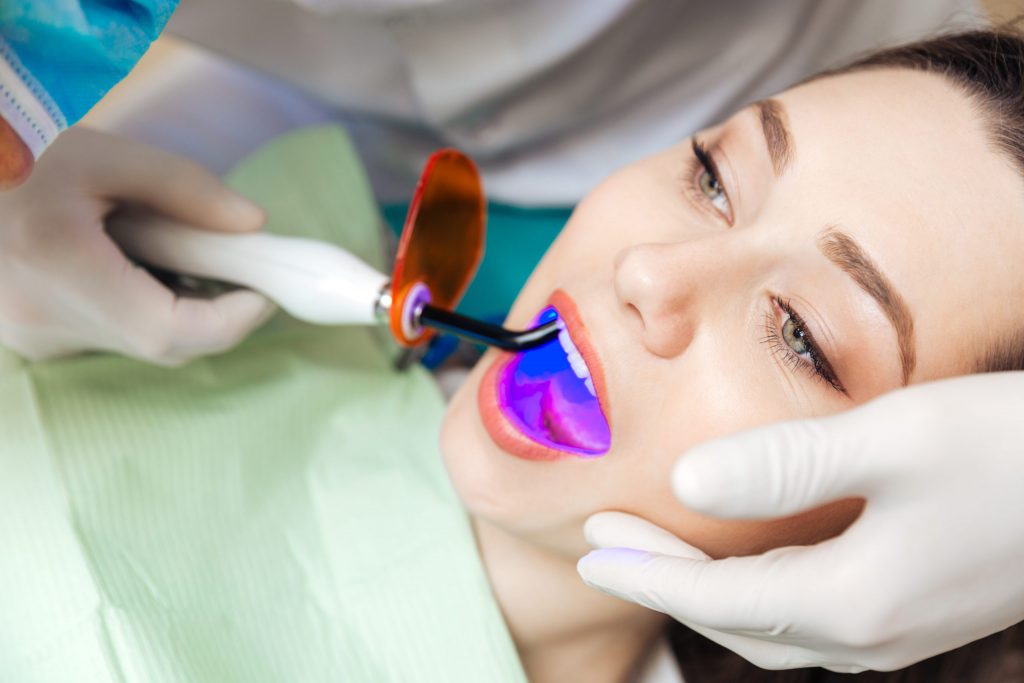Lasers were developed for teeth whitening in response to consumer complaints that traditional bleaching was too painful and resulted in inflammation. Lasers, on the other hand, can be focused on a very specific area to avoid these effects.
What Is the Process for Laser Teeth Whitening?
The process of teeth whitening is a lengthy one, involving several hours in a dental chair. A full third of this time, however, is taken to ensure the surrounding teeth and soft tissues of the mouth are protected with beeswax against the active ingredients used to whiten teeth. The type of laser used will be selected by the dentist. When you discuss each option with your cosmetic dentist, he or she will explain the details of each process. The argon laser is most typically used for laser teeth whitening. The laser activates the chemicals placed on the teeth. The light emitted from the laser speeds up the chemical reaction and color change is attained.
Your dentist will then use a fluoride treatment on your teeth once the process in complete. This both strengthens your teeth and leaves a lustrous shimmer in its wake. Laser whitening is in the top tier in terms of tooth whitening costs, but this is more than made up for by the convenience and speed at which it can be accomplished.
As with any teeth whitening process, the effects will last based on how you take care of your teeth after optimal color has been reached. Dentists recommend the total avoidance of the top five culprits of tooth-tarnish: coffee, tea, blueberries, tobacco and dark soda. These should be abstained from completely for the first week.
With most laser teeth whitening, your dentist will give you a custom-fit tray to use for color maintenance.
For the busy professional, laser whitening is a great way to lighten teeth. The outcome is beautiful and the investment in time is minimal.

